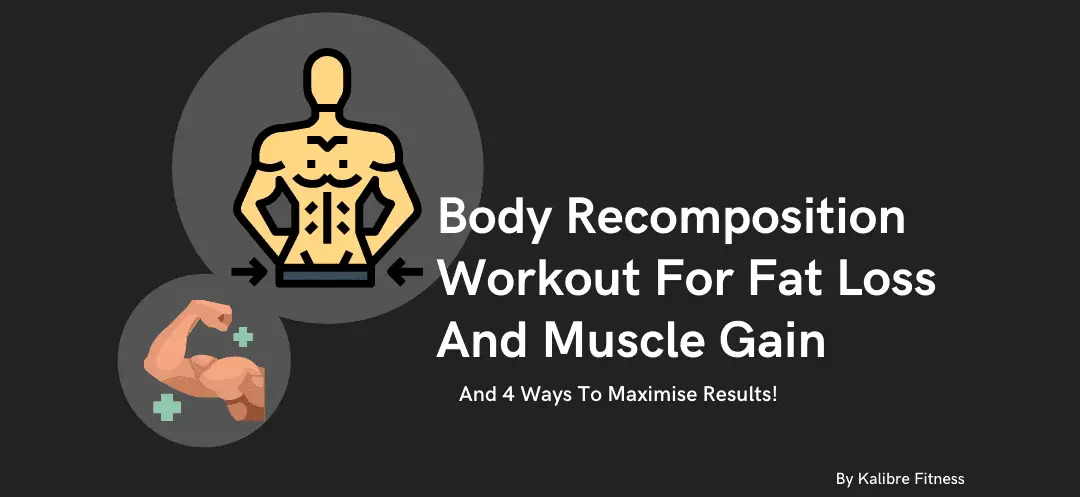Many people dream about losing belly fat and building muscle mass to get lean. Are you one of these people? If so, you have come to the right place! Today, I will explain how to work out to lose fat and gain muscle.
I have been bodybuilding as a hobby for 12 years now. And in the last 3 years, I have finally deciphered the best training techniques for maximal fat loss and muscle gains.
In this post, I will provide a simple barbell workout that anyone can do, explain how a simple workout can be effective, and provide 4 essential tips to apply to any workout to lose fat and gain muscle.
So find a comfy chair, sit back, AND LET’S GO!
- Workout To Lose Fat And Gain Muscle (AKA Recomposition)
- A Simple Barbell Workout To Lose Fat And Gain Muscle
- Why Is This Workout To Lose Fat And Gain Muscle Effective?
- 4 Methods To Maximise A Workout To Lose Fat And Gain Muscle
- 1) Perform Big Compound Lifts
- 2) Overload The Muscle Frequently
- 3) Optimise Training Volume
- 4) Practice Good Lifting Form & Technique
- Conclusion
Workout To Lose Fat And Gain Muscle (AKA Recomposition)
If you want to build that lean and athletic-looking body, then this post is for you!
The practice of changing your body’s fat-to-muscle ratio (or “Body Recomposition”) has gained a lot of momentum over the years.
Body recomposition is a highly effective exercise and dieting approach that decreases fat mass and increases muscle mass.(1)
When done properly, this will produce a lean-looking body.
For a comprehensive introduction to body recomposition, check out my “How To Lose Fat And Gain Muscle Guide“! Today’s post will focus primarily on the “working-out” aspect of recomposition.
In other words, I will be talking about how to work out to lose fat and gain muscle.
A Simple Barbell Workout To Lose Fat And Gain Muscle
Let’s get straight to the point, shall we? First, I will introduce you to the workout. Then I will explain why the workout is so effective. Finally, I will give you 4 additional tips to maximize the returns you can produce from this (and any) workout you perform.
Here is the workout to lose fat and gain muscle.

What Does The Workout Involve?
The workout is a resistance training workout. In other words, it requires you to lift weights.
It is relatively simple and can be performed by most people. All you require is a barbell, weights, a bench, and a rack. This can be found in any gym. Alternatively, you can buy home equipment at an affordable price online!
The workout itself is based on the 5 core lifts. If you are unfamiliar with the 5 core lifts, you should check out my “Weight Lifting To Burn Fat Guide“!
The workout will take around 1 hour and 20 minutes to complete once you are familiar with the routine. And performing the workout 4+ days a week is sufficient to make positive changes to your body, especially if you are a beginner.
Keep Things Simple (For Now)
Does this workout lose fat and gain muscle seem very simple? Too simple?
Well, as with many things in life, simplicity is the best way to achieve a goal! Especially if you are still relatively new to weightlifting.
Don’t let its simplicity fool you! This is an excellent workout to lose fat and gain muscle. I guarantee the workout will induce an all-over body burn after your first session.
I will now explain why the workout is so effective to burn fat and build lean muscle mass.
Do You Prefer A Shorter Workout Duration?
Now, training for 1 hour 20 minutes may be unsuitable for your personal schedule (maybe you have a family to look after or your boss likes to give you overtime).
If you prefer, you could also split your sets across more training days to allow less training time per workout session.
For example: Split your sets across 6 training days, performing 2 sets of the 5 core lifts each day. Each workout will take ~ 50 minutes to complete.
Why Is This Workout To Lose Fat And Gain Muscle Effective?
To understand how this simple workout plan is so effective at burning fat and gaining muscle, you need to first understand how resistance training affects fat loss and muscle gain. And more specifically, how resistance training leads to fat loss and muscle growth.
Below, is a diagram that summarises the relationship between resistance training, fat loss, and muscle growth. I will expand on the 5 key concepts you need to know when training for fat loss and muscle gain.
The information provided below is a crash course. Direct and concise.
If at any point you do not understand the concepts, you can read my “Does Weight Lifting Burn Fat Article”. This explains the concepts in a more digestible way!
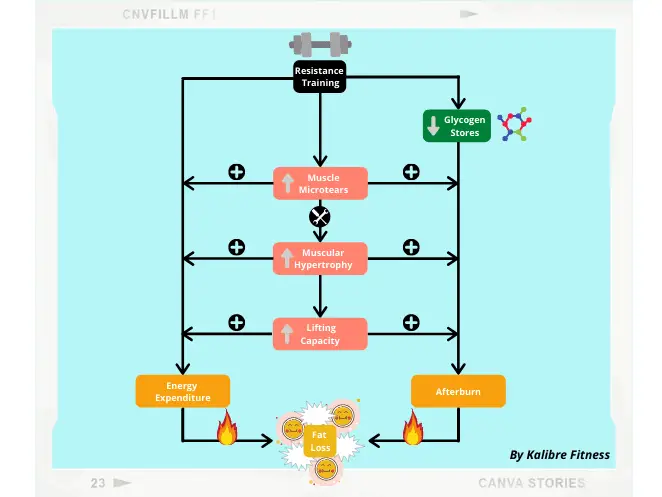
1. Resistance Training Burns Fat By Increasing Energy Expenditure
Resistance training is a physical activity. And all physical activities require energy to fuel muscle contraction. By engaging in resistance training, you are increasing your total daily energy expenditure (TDEE).
2. Resistance Training Depletes Glycogen Stores
Glycogen is a muscular energy store. When it is depleted, it needs to be repleted afterward. And this is an energy-intensive process that burns calories.
Resistance training is a particularly intense form of exercise called anaerobic exercise. And anaerobic exercise is an excellent way to deplete glycogen.
This is important because glycogen repletion contributes to the Afterburn Effect (explained below).
3. Resistance Training Leads To Muscular Hypertrophy (Muscle Growth)
When you lift weights, the muscles become damaged. This damage comes in the form of “micro-tears”, and micro-tears lead to a repair response.
When the body repairs micro-tears, the muscle grows. And this is called muscular hypertrophy.
Hypertrophy is another energy-intensive process that burns calories. Hypertrophy and glycogen repletion contributes to the Afterburn Effect.
4. Muscle Growth And Glycogen Depletion Increase Afterburn
The Afterburn Effect describes how your body will increase its metabolism for up to 48 hours after a resistance training workout.
It is driven by muscle repair, hypertrophy, and glycogen repletion, all of which are energy-demanding processes!
5. Increased Afterburn And TDEEFacilitates Fat Loss
Afterburn increases your TDEE, and increased TDEE facilitates the fat-burning process.
An increased TDEE facilitates fat loss because it will increase the likelihood that you will enter a caloric deficit. And caloric deficit simply means you are consuming fewer calories than you are burning.
When you are in a caloric deficit, your body burns fat for energy. Some muscle is usually burnt in the process too. But if you consume a high-protein diet, your body will preserve it’s muscle mass!
4 Methods To Maximise A Workout To Lose Fat And Gain Muscle
Now you understand how the simple resistance training workout is so effective for fat loss and muscle gain, I will now provide you with 4 ways to MAXIMISE the results from the workout to lose fat and gain muscle.
These 4 tips can be applied to ANY weightlifting program to lose fat and gain muscle!
1) Perform Big Compound Lifts
What Are Compound Lifts?
Compound lifts (AKA big lifts) are exercises that activate multiple muscle groups around multiple joints.
Exercises such as the 5 core lifts are excellent compound exercises to burn fat and build muscle.
Compound lifts are the opposite of isolation lifts, which activate single muscles around a single joint. Bicep curls, deltoid raises, and chest flies are examples of compound exercises!
Why You Should Perform Compound Lifts
i) Increase Muscle Recruitment And Activation

There’s a good reason why many weightlifters vouch for compound lifts.
Unlike isolation exercises, compound exercises recruit more muscles to execute a movement. The more muscles recruited to complete a given exercise, the more fat you will burn and the more muscle mass you will build.
An interesting study also compared the muscle activation in a bench press (a compound exercise) to a pec fly (an isolation exercise). The results showed the bench press led to much higher muscle activation than the pec fly, for the same exercise intensity(16).
Since muscle activation correlates with muscular hypertrophy(17), compound lifts are a great way to promote muscular hypertrophy!
ii) Allow Heavier Weights To Be Lifted.
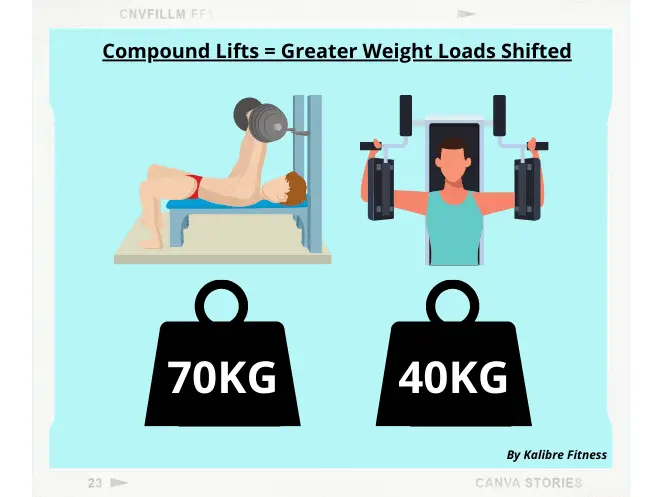
Since compound lifts recruit many muscles (and often the largest muscles in the body), they will allow you to lift heavier weights.
Heavier weights increase the resistance intensity applied to a muscle. And this will produce larger “microtears” in the muscle
Larger micro-tears produce a larger repair response.
Therefore lifting heavier weight-loads will increase your gains in muscular hypertrophy and strength(18).
Lifting heavier weights will also benefit your fat loss efforts by depleting your glycogen stores faster(19), and promoting a larger afterburn effect post-workout!
iii) Time Efficient
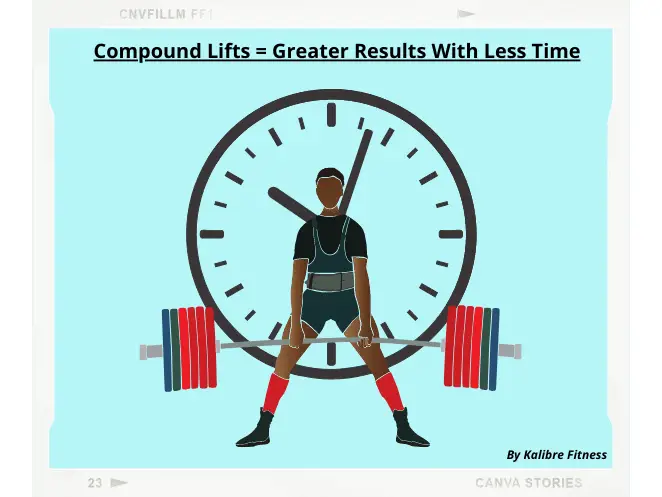
Are you able to dedicate hours every day to working out?
Many people cannot. In fact, most people want the most benefits with minimal time spent training.
Since compound lifts activate more muscles and allow you to lift heavier weights, they will give you the best “bang for buck” in your workout to get lean.
In fact, one of the biggest advantages of creating a workout based on compound lifts is that it allows you to develop and maintain a defined musculature with relatively short workout durations.
This makes compound lifting highly time efficient.
iv) Elevate Heart Rate For Fat-Burning Benefits

When it comes to cardiovascular benefits, most people know about aerobic exercise (such as running).
But did you know that resistance training also provides cardiovascular benefits?(20)
In fact, resistance training (performed at a high intensity) can have significant cardiovascular benefits. This is because lifting heavy weights will result in a sudden nutrient demand in the muscles.
The heart responds to this by increasing the beats per minute (BPM) to deliver nutrients to satisfy the demand.
This means high-intensity compound training can be very effective at burning calories.
v) Stimulates A Hormonal Response
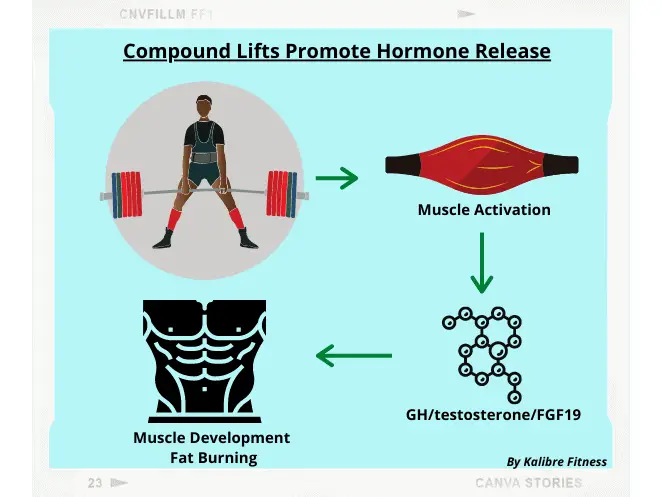
Did you know that compound lifting causes your body to release hormones that help burn fat and build muscle?
Examples of hormonal responses to weightlifting include Growth hormone(21), testosterone(22), and FGF19(23).
All three hormones are associated with muscle growth. And growth hormone is also linked to increased fat mobilization (15).
Interestingly, the hormone response seems to be proportional to muscle activation. In other words, recruiting more muscles during workouts results in a larger hormonal response.
These studies indicate that big compound lifts (which recruit a lot of muscles) are the perfect workout for fat loss and muscle gain. This is because this kind of workout will promote a larger hormone response.
Include Variety To Gain Maximum Results!
Compound lifting does not have been limited to the 5 core lifts. Adding variety to a workout will actually benefit results by providing a new stimulus to the muscles.
There are many other compounds lifts you could try. Check out 50 Ultimate Muscle-Building Compound Lifts by Fitness Tribe for more great ideas!
Include Compound Lifts Into Any Workout To Lose Fat And Gain Muscle!
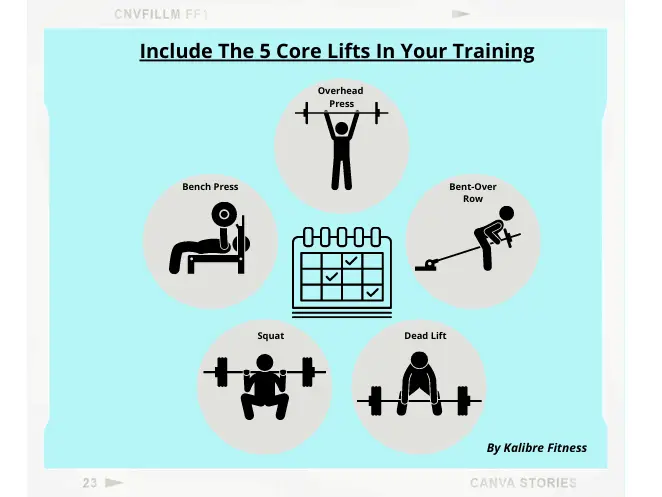
For intermediate or advanced lifters who already have a resistance training program, make sure it is focused on compound lifting.
Identify any isolation lifts in your current program, and substitute them for compound lifts. This will improve your fat loss and muscle gain results.
For beginner lifters, the 5 core lifts will provide a solid foundation to build your weekly training program.
2) Overload The Muscle Frequently
What Is Progressive Overload?
Earlier, I described how resistance training produces micro-tears in the muscle. And the subsequent repair process leads to increased muscle fiber size and number. This results in muscular hypertrophy.
But will the muscle continue growing indefinitely?
The answer is no. Unless you continue to challenge it. The stimulus adaptation curve summarises this phenomenon very well.
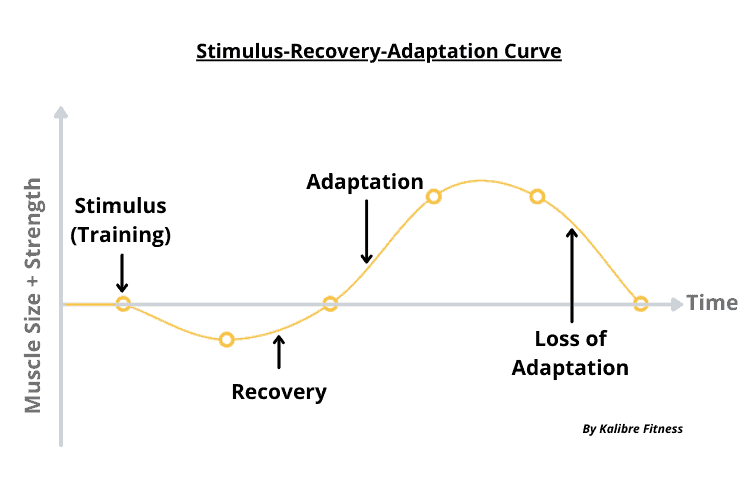
Muscle is adaptive tissue. This means it grows and adapts in response to a challenging stimulus.
When the stimulus is no longer challenging, the muscle will stop growing. And if the stimulus is completely removed, the muscle will become smaller (atrophy).(24)

Progressive overload involves increasing training intensity on a regular basis so that the muscles are continually challenged by a new stimulus.
This will ensure continual muscle growth over time.(24)
I will explore the different ways to increase training intensity in further detail below.
Overloading Will Help You Lose Fat And Gain Muscle Faster!
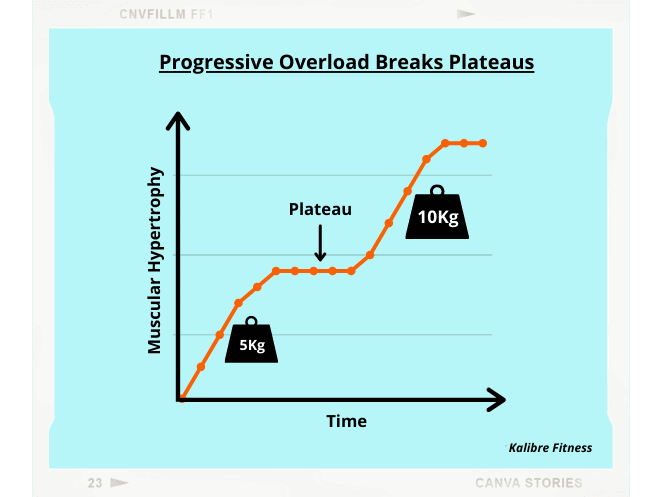
New lifters can often build muscle fairly quickly with “newbie gains”.
Newbie gains produce rapid muscle development and very little fat gain, but they are typically restricted to the first 6-12 months of lifting .(25)
After this honeymoon period, the benefits of training will decrease and muscle development will reduce significantly.
This “plateau” is due to the adaptive nature of muscle described previously,
Intermediate and advanced lifters will also experience similar “plateaus” if they do not exert increasing weight loads in their training program.
Therefore, progressive overload is absolutely essential for continued lean muscle mass development.
Progressive overload can also keep your training program engaging as you continue to beat your personal records. An enjoyable program is important for long-term training success.
How To Apply Progressive Overload
You can increase training intensity in many ways.
Here are the best ways to increase the intensity of any workout to get lean.
5 Ways To Overload
i) Increase resistance (weight).
ii) Increase sets
iii) Increase reps.
iv) Increase training frequency
v) Decrease rest time.
i) Increase The Resistance.

This is the easiest way to increase training intensity.
Make incremental weight additions to each exercise every week or increase the weight load when it is no longer difficult to complete a set.
Overloading may reduce the number of reps you can complete. This is normal!
Remember, you are pushing your muscles to their maximum capacity. And challenging the muscles will lead to growth!
If you continue to overload a muscle, it will adapt, and you will be able to resume your previous rep range with the increased weight load.
Smaller-weight plates of around 1.25-2.5 kg are ideal for breaking plateaus. They will allow you steadily to overload without sacrificing too many reps.
ii) Increase The Reps.
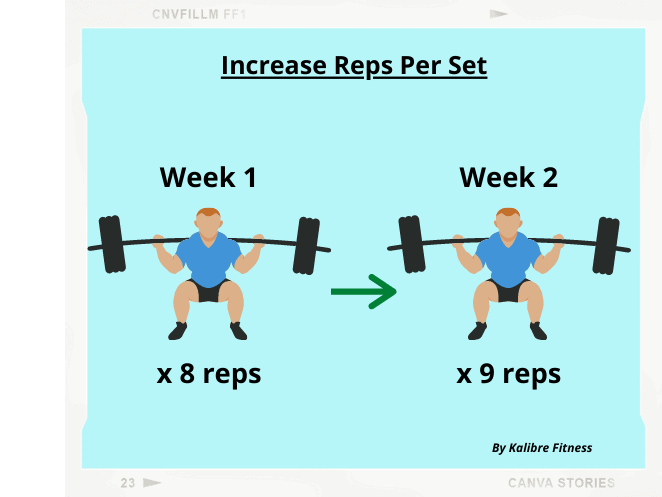
Increasing the number of reps performed in each set will also overload your muscle.
With time, you will naturally be able to complete your sets with ease, and STILL have the energy to squeeze out an extra few reps. This is a good point to increase your reps.
If you decide to overload by increasing reps, be sure to stay within an 8-12 rep range. This is the optimum range for muscular hypertrophy.
Going over 12 reps per set will begin training the muscle aerobically (i.e. muscular endurance), and you will not receive muscle-building benefits.
When you are able to complete 12 reps per set, you should begin increasing resistance rather than continue adding more reps.
iii) Increase The Sets.

If you find that completing 3 sets in a given workout session becomes easy, introduce an extra fourth set.
Alternatively, add sets of different but similar exercises.
An example of two similar exercises is the flat bench press and the incline bench press. When you find completing 3 sets of a flat bench press becomes easy, introduce an extra set of incline bench presses!
Although both presses will recruit the chest muscles, the angle of the incline bench press will shift focus to the upper chest.
Both methods of increasing sets will increase your total training volume, and challenge the muscles to grow.
iv) Increase Training Frequency.
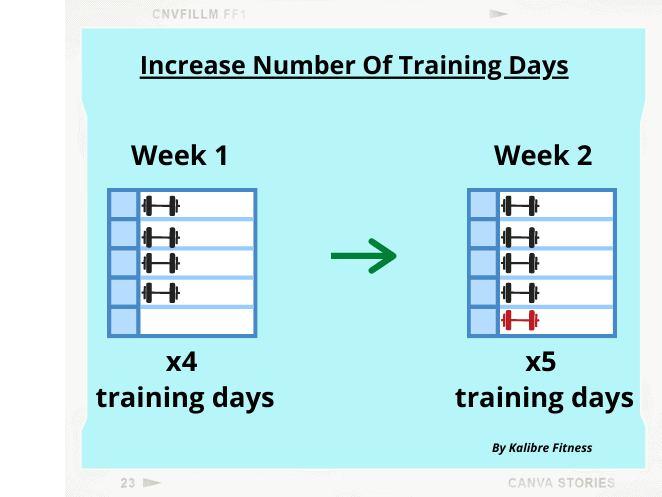
Training frequency simply refers to the number of times you work for a particular muscle group each week.
This is an effective way to overload the muscles if you are currently training less than 5-6 days a week.
If you fall into this category, you will find that with time, your muscles can recover quicker between training days. This is an excellent time to introduce extra training days to your program.
v) Decrease Rest Times
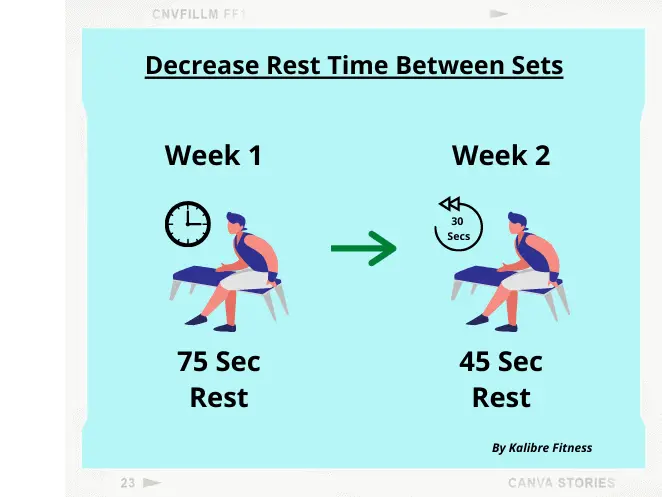
This is an excellent way to “shock” your muscles.
Most people have a standard resting time between sets.
This is bad for continued muscle growth.
Why?
Because your muscles will become accustomed to the same resting duration.
Cut short your normal resting duration, and force your muscle to become more metabolically efficient!
This forces the muscle to make the physiological changes that allow it to utilize energy more efficiently and recover more quickly. In other words, GROWTH!
3) Optimise Training Volume
What Is Training Volume Optimisation?
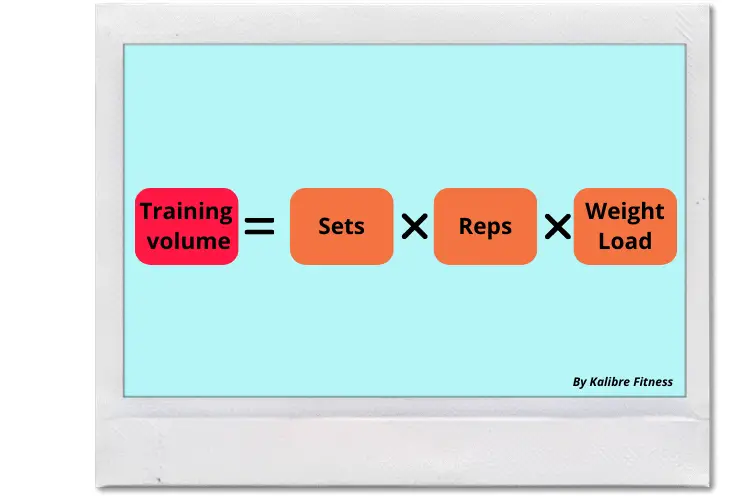
Training volume simply refers to the total amount of weight lifted in a given training session. The value can be obtained with the formula “number of sets x reps x weight load”.
All three parameters will affect your total training volume. And all three parameters will have a direct result on fat loss and muscle gain.
Therefore training volume optimization will improve your recomposition results.
Consider this example of training volume optimization.
Jason is considering a workout to get lean, lose fat, and gain muscle.
He has decided to include barbell squats in his training program. His one rep max (the most weight he can squat in one go) is 60kg.
Now, Jason is considering between the two training volumes A and B shown below.
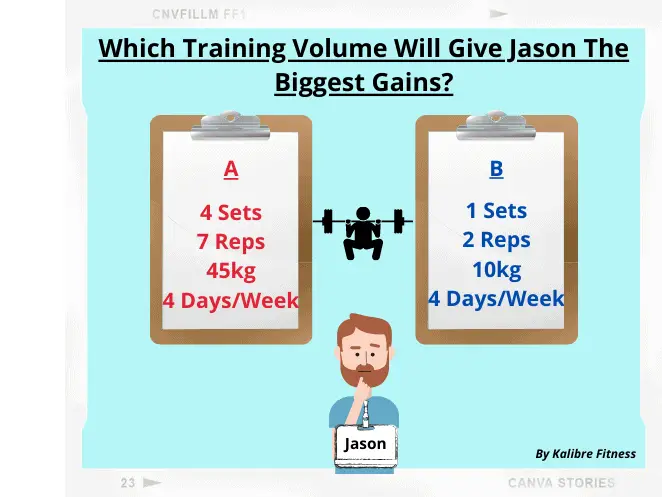
Which training program will give Jason the highest rate of training returns?
If you guessed program A, you would be right.
This is because program A has a much higher training volume than program B, and therefore more effectively stimulates Jason’s muscles for growth.
In this example, Jason has tweaked his training volume (set number, rep range, and weight load) to provide the highest rate of training results.
This is training volume optimization, and smart optimization will maximize the results for a workout to get lean.
Why You Should Optimise Training Volume
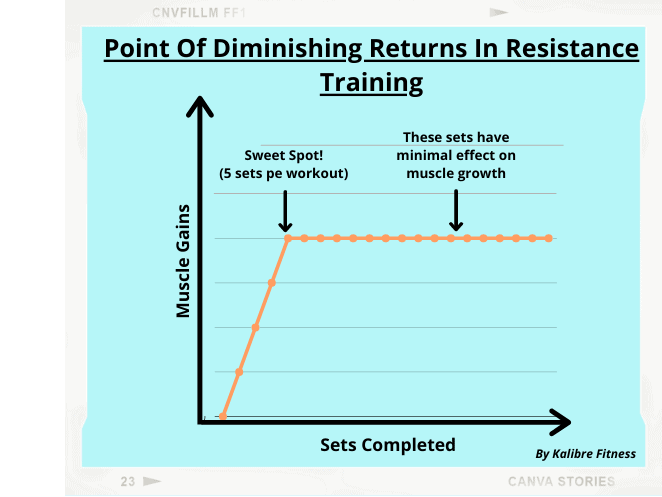
Jason’s situation is a very extreme example of optimization. In reality, you can’t simply max out on all the training volume parameters and expect good results.
Instead, training volume optimization involves a careful balancing of sets, reps, and weight loads.
So what is the optimal number of sets, reps, and weights to facilitate muscle growth?
Studies show that 10+ sets per muscle group per week is required for maximal muscular development.(26)
Interestingly, there is also a point of diminishing returns. Studies have shown that performing more than 5 sets per muscle group per training session will stop returning muscle-building benefits, and can even be detrimental to muscle growth.(27)
Therefore, it is imperative to choose a suitable number of sets, reps, and weight loads for each of your exercises in your workout to get lean.
This will allow you to get the maximum benefits of training without spending time on “wasted sets”.
How To Optimise Training Volume
If you are an intermediate or advanced lifter, make sure you spread your sets throughout the week. This means if you are currently doing “bro splits”, find ways to spread out your training frequency.
For example: Instead of doing 10 sets of chest exercises on Monday, do 5 on Monday and 5 on Wednesday.
Kevin Finn from Fitness Walkthrough and Tony Gentilcore recommends hitting each muscle group a minimum of twice per week (on separate days).
Here are 3 tips to create an optimized plan for a workout to get lean:
3 Rules – Each Muscle Group Should Be Worked At:
i) 10-20 Sets Per Week.
ii) 6-12 Rep Range.
iii) 70-80% of 1 Rep Max
i) Hit Each Muscle Group With 10-20 Sets Per Week, Spread Over Multiple Days.
Spreading your sets over multiple days will optimize your sets for muscle growth, limit time spent on “wasted sets”, and get the most benefits from your training.
ii) Keep Reps Within The 6-12 Range.
Keeping within the 6-12 rep range will maximize the muscle hypertrophy benefits from your training. 15+ reps are ok if you push the muscle close to failure.
iii) Keep Weight Resistance At 70-80% of 1 Rep Max
A weight resistance of 70-80% maximal capacity will ensure you are challenging your muscles sufficiently for growth.
4) Practice Good Lifting Form & Technique
Why You Should Lift With Good Technique

Practicing good form and technique is crucial to produce the greatest results from your training.
Good form and technique will ensure the intended muscle group is being activated. And maximal muscle activation is associated with greater muscle development.(28)
Practicing good form and technique is also essential to prevent injury.
Improper form, such as using body momentum to lift a weight or allowing a weight to fall uncontrolled, can significantly increase the risk of injury.
This is because improper form causes muscle groups to be activated unintentionally and physical stress to be placed on the joints and tendons. Combined with heavy weights, this is a recipe for disaster.
Injury is not only detrimental to your general health but will also impact continued training. This is not ideal if your goal is to get lean!
Sometimes, injuries can be so severe that lifting ability is compromised permanently.
So practice good form and technique!
How To Improve Form & Technique
i) Focus On The Concentric & Eccentric Movements
A concentric movement refers to the phase of a lift where the muscle becomes shorter whilst it produces force. The eccentric movement refers to the phase of the lift where the muscle becomes longer whilst producing force.
In a bench press, pushing the barbell upwards would be the concentric phase, whilst lowering the barbell would be the eccentric phase.
Muscle activation in both phases is essential for muscle mass development(29)
Therefore each lift should focus on slow and controlled concentric/eccentric movements to gain the most benefits.
ii) Hold The Contraction.
Holding a contraction involves pausing a movement at the point of maximal contraction. At this point, squeeze the target muscle group and hold the contraction for a split second.
This will help overload the muscle, and challenge it for growth.
Holding a contraction will also benefit fat loss. Not only will you burn more calories during the workout, but the afterburn effect will be greater post-workout.
This is because holding a maximally contracted muscle is metabolically intensive, and utilizes the anaerobic energy pathway. As explained above, the anaerobic energy system is responsible for the afterburn effect.
iii) Choose A Suitable Weight Load.
Completing reps at 70-80% of maximal lifting capacity is usually recommended for muscular hypertrophy. However, learn to listen to your body.
Always lift a weight load you can manage. It is always better to lift a lighter weight with proper form and technique than to lift a heavier weight badly.
A lighter weight will allow the contraction to be held (as described above). And this will be more beneficial for hypertrophy than lifting heavy loads incorrectly.
For more information on choosing a suitable weight load, check out my “How much Weight Should I Lift?” article.
iv) Complete Sets Without Breaks.
Although it may be tempting to give in to the lactic burn and pain, always try to complete every set without pausing.
In fact, it is better to work a muscle to failure (where you cannot physically squeeze out another rep despite your best efforts), than to pause within a set.
This is because working a muscle to failure will force it to repair itself and make adaptations to lift heavier loads next time.
Pushing a muscle to failure will also stimulate the anaerobic energy system, and promote the fat-burning afterburn effect.
Conclusion
There we have it!
In today’s post, I have provided a simple barbell workout to lose fat and gain muscle. Despite its simplicity, I have also explained why it is effective to burn fat and build muscle. I have also provided 4 tips that should be applied to any workout to lose fat and gain muscle.
But remember, resistance training is only half the battle. Successful recomposition also requires a tailored diet. I will explore the best diet for recomposition in my next article!
Have you tried our sample workout plan? (I promise it’s effective!)
Feel free to send me a message if you have any questions! You can find my details on the “contact us” page.
You may also be interested in the downloadable Kalibre Blueprint PDF which details exactly how I gained 40lbs of lean muscle (it’s 100% free!). It details the exact exercises and nutrition (with printable worksheets) I used to go from skinny to ripped!
Thanks for reading guys!
Peace Out,
Kal
(Biochemistry BSc, Biomedical Sciences MSc, Ex-Skinny Guy)

